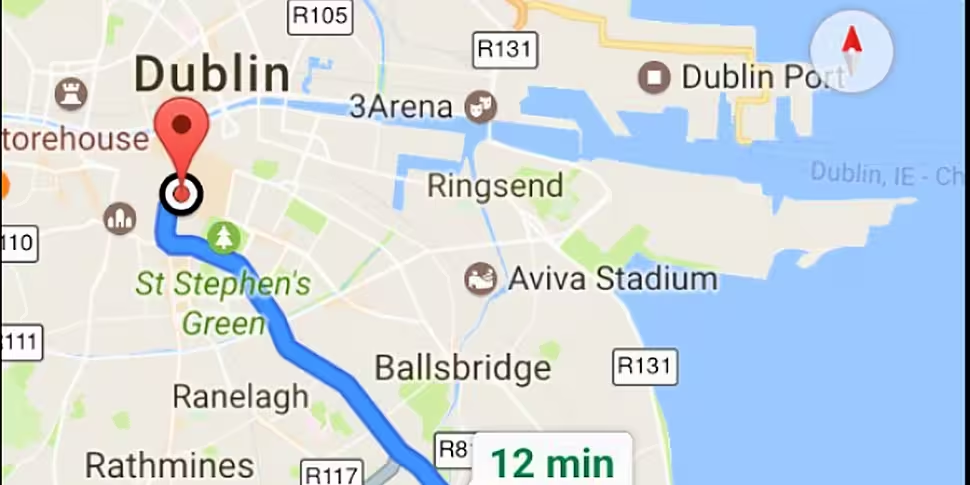All this week on Newstalk we’ve been asking ‘Are we there yet?’, as we explore the issues and potential solutions for peak-time commuters. Today we’re looking to see if technology could hold the answer.
Technology is already being used in a host of ways to try and help traffic flow freely throughout the country. Yesterday we heard about the 3D scanner An Garda Siochana are using to help speed up the accident assessment process, but aside from that, there is so much going on.
In the area covered by Dublin City Council alone, there are 130 CCTV cameras placed across the city, around the M50 and in neighbouring local authorities. This system uses sensors at traffic intersections to detect how many vehicles are in each lane.
The traffic lights can then be adjusted to respond to congestion. It’s also possible to manually override automatic traffic lights in the event of a collision or bad weather, for example.
This system is constantly generating data that can help identify ongoing issues, as well as black spots too.
GPS
At a consumer level, many of us now use a GPS or connected maps solutions to plan our journeys. Google Maps is an example of an incredibly popular service that many of us avail of.
Gotta love the mornings... #gridlocknt pic.twitter.com/sDbSGUcKhN
— Jess Kelly (@jesskellynt) April 27, 2017
Google collates real-time traffic information and makes route suggestions based on that information. I spoke with Krish Vitaldevara Maps product manager at Google about how exactly that works.
"At Google Maps, we compute traffic based on the anonymised, aggregated data of people who have opted into location reporting. We then augment that model with data sources, such as incident reports, official traffic feeds from Departments of Transportation and user reports.
"Based on a historical view of this data, we can predict what car traffic is usually like on specific roads at specific times. This technology allows us to give users accurate, real-time view of not only what traffic is like at this moment in time, but also predict how the traffic is trending. This allows users to get insights into what it might be like in, say, 20 minutes."
What’s interesting is that Google is constantly working towards solutions that will tackle the issue of gridlock and heavy traffic, as Krish explained to me.
"Most of the users use Google Maps for when they're travelling to an unfamiliar place, but we believe that there is significant value in using Google Maps on your everyday commute. Most of the gridlocks are caused by accidents, construction and road closures. In these occasions, clicking on the 'traffic jam' icon gives you an estimate of the impact of the gridlock and when it is expected to be alleviated. We are focused on not just providing information about your destination, but also about all aspects of your journey."
Working remotely
We’re some time away from flying cars, but if Uber has its way, it’ll happen sooner rather than later. Just this week, the ride-sharing, taxi firm announced their plans to begin testing flying vehicles within the next 3 years.
But one, more grounded solution that could help free up the roads is working remotely.
We know that broadband connectivity is a big barrier to this happening in Ireland, hopefully, when the National Broadband Plan is completed, we’ll see a higher uptake in this regard. But there’s a lot to be said about the attitude of businesses in Ireland too.
We often hear about presentism and how people feel that have to be chained to the desk. There are a number of companies, active in Ireland right now, that actually promote working remotely. One such company is NearForm. They are a Waterford based tech company who say their motto is “talent first, location second.” Paul Savage, Chief Operating Officer with the company told me about the benefits of working remotely.
"I would say that mastering remote working was one of the critical success factors early in NearForm's life. When the company was set up, the founders didn't just want people who could drive to work in Tramore. They wanted to be able to pick the best developers in the world. They set about making sure everything was started remote first. Developers can work remotely, teams can communicate well and deliver projects successfully.
"Location is not important. Talent is important. 'Talent before location' is a key principle in NearForm and it means we can literally be based in Tramore and have some of the best developers working for us."
For more from this series, please click here.









